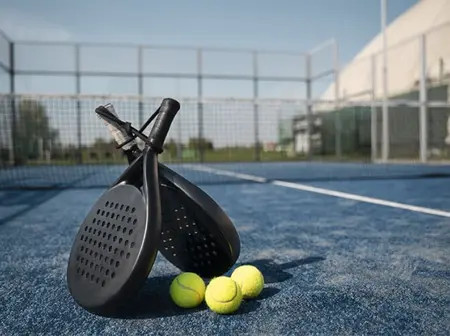Padel, the racket sport that fuses tennis with squash, is exploding in popularity in Kenya—emerging as more than just a workout, but a lifestyle statement.
Globally recognized as the fastest-growing sport of the last decade, with over 25 million players across 90 countries, padel is moving quickly from Nairobi’s exclusive social circles into the city’s mainstream leisure calendar.
By 2025, it has become part of a broader urban shift where fitness isn’t confined to gyms or running clubs. Nairobians are chasing activities that blend exercise with social connection and entertainment. With its easy-to-pick-up rules and group-focused play, padel is slotting perfectly into this cultural movement.
The sport’s origins date back to 1969 in Acapulco, Mexico, where Enrique Corcuera reimagined tennis in his backyard on a smaller, walled court. Spanish aristocrat Prince Alfonso de Hohenlohe later took it to Spain, where it flourished into a national obsession. Today, Spain is home to over six million players and 20,000 courts.
Kenya joined the padel wave decades later, with Nairobi’s first courts opening around 2021. At first it attracted mostly expatriates and professionals from the city’s upper-middle class. But as new venues opened and competitive leagues formed, interest surged.
By 2023, padel tournaments were already part of Nairobi’s lifestyle calendar, solidifying its place in the city’s evolving culture.
Padel’s rise comes down to three things: simplicity, inclusivity, and vibes.
Unlike tennis, which can feel technical and intimidating, padel lets beginners rally competitively almost instantly. Its smaller courts, underhand serves, and the option to bounce shots off the glass walls make it approachable yet exciting.
Equally important is its social nature. Most matches are doubles, meaning play is naturally interactive, and in Nairobi, games often roll straight into after-parties—complete with food, music, and drinks. For young professionals, padel doubles as both a workout and a weekend hangout.
September 2025 marked a major milestone: the Smash-tember Showdown, hosted by Social Padel Network in collaboration with White Cap Crisp.
The three-day tournament brought together 250 players and 122 teams competing across six courts for a prize pool topping Ksh500,000 in cash and merchandise. Fans packed the sidelines, creating a festival-like buzz.
A standout performance came from Tatiana Karanja, who stormed through four rounds in the women’s playoffs, keeping spectators hooked. The men’s and women’s brackets alike showcased emerging local talent, proving Kenya’s player base is quickly leveling up.
But it wasn’t just about the competition. Between matches, fans hit chill zones stocked with food stalls, wellness experiences, and live entertainment.
According to Faith, Brand Lead at White Cap Crisp, “The passion and sportsmanship displayed by all participants, coupled with the fantastic turnout, truly underscore the growing popularity of padel in Kenya. White Cap Crisp is delighted to support such a dynamic and engaging event that brings people together.”
The Smash-tember Showdown sealed padel’s spot on Kenya’s annual sports and lifestyle calendar.
In Kenya, padel is often described as “accessible but aspirational.”
Court rental: Ksh1,500–3,000 per hour (usually split among four players)
Rackets: Ksh6,000–35,000
Balls: Ksh800–1,500 (per can of three)
Shoes: Ksh7,000–12,000
Compared to other sports, padel strikes a middle ground. Here is a table of the breakdown:
Padel falls somewhere between running and golf—aspirational, but with a strong social payoff that resonates with Kenya’s urban middle class.
Right now, most courts are concentrated in Nairobi, with hotspots like Social Padel Network, Karen Country Club, and Riverside Padel in Westlands. Some upscale residential estates in Runda, Lavington, and Karen are also building courts as part of their lifestyle offerings.
Expansion plans are already on the table for Mombasa, Kisumu, and Nakuru. But barriers remain—court fees and gear costs still lock some people out, while the absence of a vibrant national federation makes it hard for Kenyan players to break into international circuits. Awareness beyond Nairobi is also minimal.
Still, the growth potential is massive. Public courts could open access, schools could nurture young players, and corporate sponsorships (like White Cap Crisp’s) could fuel the sport’s commercial momentum.
With proper investment and structure, Kenya could easily position itself as East Africa’s padel hub—and maybe even step onto the global stage.

Leave a Reply